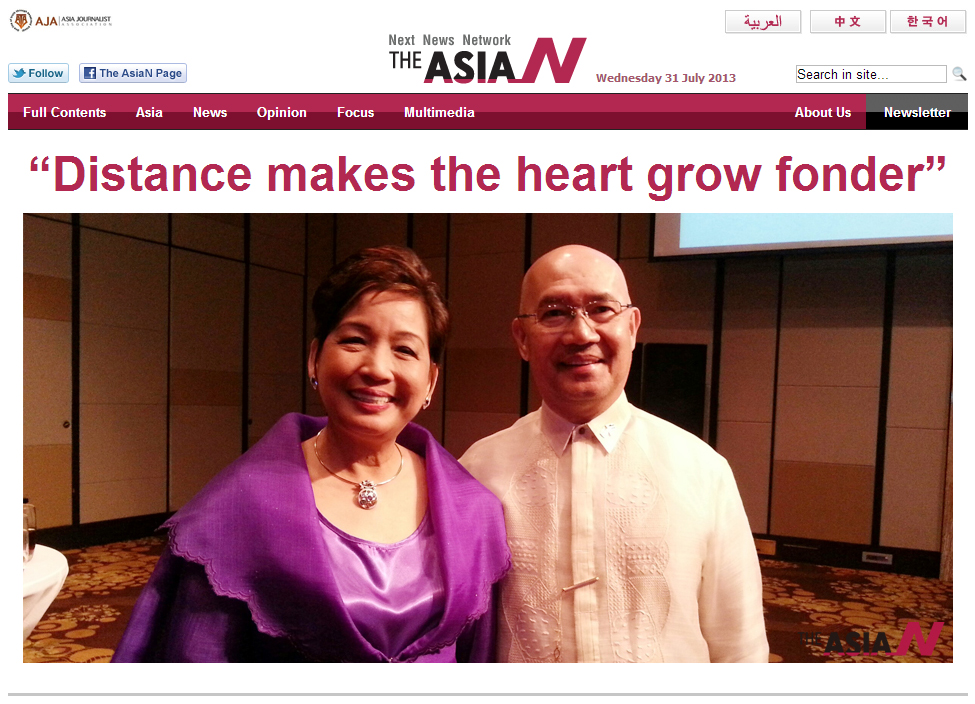“Distance makes the heart grow fonder”
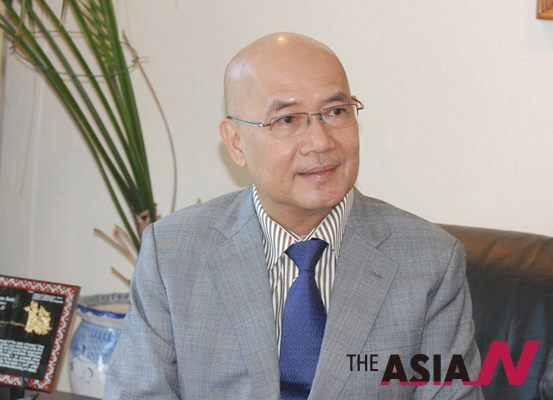
Interview with the Philippine Ambassador to Korea Luis Cruz
Going back and forth between Korea and Singapore has become routine for Ambassador Luis and Minda Cruz. They joined the Foreign Service together in 1983 and have been on joint and separate missions from London, Beijing, Malaysia, and Singapore to Korea. For the last 5 years, they have been going back and forth between their two assigned countries, co-hosting the Philippine National Days in both Korea and Singapore. In an interview with The AsiaN earlier this month at the Philippine Embassy in Seoul, Amb. Luis Cruz shares their story.
Both being ambassadors in different countries, you are not able to live together. How often do you meet and where do you usually meet?
We knew from the beginning that eventually we might be posted in different countries. We discussed this possibility thoroughly. When the time came to be separated due to our missions, we discussed that Minda would have the choice to either resign from the Foreign Service or continue and pursue her career.
Our first mission overseas was to London. Since my wife and I were still junior officers, we had joint postings. At the time my daughter was 4 months old. Now she is 27 and married. We lived very close to Kensington Palace where Princess Diana lived. The Philippine Embassy was located next to the park behind the palace.
After London, we both went to Beijing. The first time we were sent apart was our 3rd overseas posting in 1997, when Minda worked in Hong Kong and Macau and I worked in Guangzhou, China. We were grateful that we were located so close together. I basically visited Minda and our children in Hong Kong every weekend. If I left work at 5pm on a Friday, I could get to Hong Kong by 8pm.
Later, Minda was transferred to Singapore and I to Kuala Lumpur, Malaysia. It was easy to travel back and forth. I went to visit my family in Singapore almost every weekend and when the children were on their school break, they would come visit me in Kuala Lumpur. In 2006-2008, we were both back in Manila and in 2008, Minda was assigned as Ambassador to Singapore and I, Ambassador to Korea.
When Minda comes to Korea, she plays the role as spouse, and when I go to Singapore, I play the part of spouse. It makes me understand a little how the spouses of ambassadors must feel.
We are grateful that during our careers, we could be together or at least in nearby countries. We are furthest apart in our current arrangement. As the Foreign Service takes married couples situations into consideration when giving assignments, we sometimes call the DFA, Department of Foreign Affairs, the Department of Family Affairs.
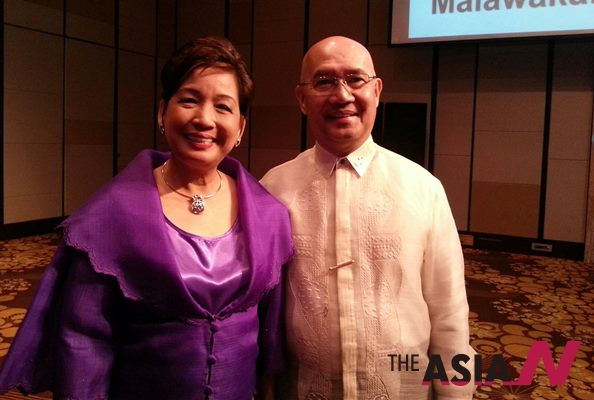
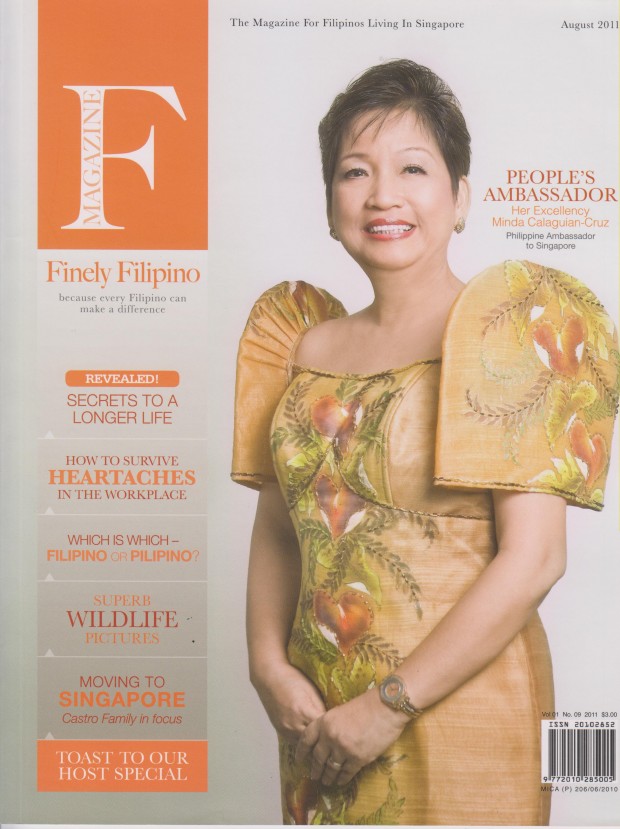
How do you overcome the distance?
Not only are my wife and I apart, but our whole family is separated. My daughter is married to an Australian and is now living in Australia. My son is a filmmaker living in Manila. My wife is in Singapore and I am here in Seoul. But communications has become much easier nowadays. We make the most out of technology and communicate frequently and try to meet as often as possible. Just this past April, the whole family met up and went to Australia, where my daughter lives. We use skype, kakao talk, viber, e-mails, and google hangout to communicate.
Since my wife and I have basically the same job, it is easy for us to understand each other. If my wife messages me and I can’t reply immediately, she will understand that I’m probably in a meeting or at some function.
It all comes down to how you manage your relationship. Being apart isn’t so bad. It’s healthy to have time for one self. I want to share a quote by Khalil Gibran. “Sing and dance together and be joyous, but each one of you be alone–even as the strings of a lute are alone though they quiver with the same music.” There is also the other saying that “absence makes the heart grow fonder.”
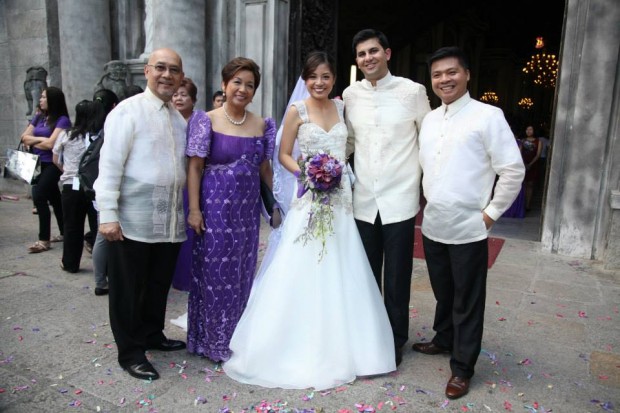
In Korea, the number of women diplomats is increasing drastically. Until now, there has not been a case of a married couple who are ambassadors. However, there could be quite a large number of them in the future. What advice would you give them?
When I was sworn in by the foreign minister in 1983 along with 14 service officers, he gave us some good advice about the importance of choosing one’s spouse well. “Eagles with clipped wings can fly, but they can’t soar. Choose your spouse wisely, someone supportive who can help you to soar.”
There was also a Philippine lady ambassador to Belgium. Her husband was a banker. When her husband was assigned to Turkey, she asked to go on a long leave of 5 years without pay so she could go and support her husband. At other times her husband went to support her. After those 5 years, she returned to the Foreign Service.
Understanding and supporting one another is most important in a relationship. In relationships, maturity helps us to deal with being apart. I do advise for newlywed couples to be together during the first few years though.
It seems very rare for married couples to be ambassadors for their country at the same time. Are there other cases like you and Mrs. Cruz in the Philippines?
It’s not very uncommon for married couples to be ambassadors in the Philippines. Minda and I joined the Foreign Service in 1983 at the same time. Within our batch, there were 3 other married couples and another married couple in the senior batch. There was a lady ambassador to Thailand who was married to a vice minister in the Philippines.
It seems that women in the Philippines are very active and play important roles in society. Could you please tell us about women’s social participation in the Philippines?
Our women are empowered. They know how to assert their rights. Laws in the Philippines are gender sensitive. I have a high respect for Filipino women in this aspect. In July 2011, the Filipino Korean Spouses Association (FKSA) sent a petition to the parliament in Korea asking them to introduce dual citizenship, which later came into effect. In Busan, there was a case of a Filipino woman who brought her husband to court accusing him of marital rape. The woman won the case, but the husband ended up committing suicide. This is a sad story, but an example of a Filipino woman standing up for her rights.
What can Koreans learn from the Philippines?
The Philippines is strong on human rights and laws relating to labor and employment. I often get invitations from NGO groups to speak about topics related to human rights issues, women in conflict, and gender sensitive laws. It is important for the government to take care of women and children who become victims of civil war such as widows and orphans. From 5 years ago, Korea has recognized that it can learn about legislature on women and human rights from the Philippines. The Philippines has recently enacted a bill on rights of household workers such as maids to provide them with welfare including insurance.
What do you think about the Korean Wave (Hallyu)?
Hallyu has helped for Korea to be widely known throughout the world. In diplomacy, there is hard power such as military assets and global policemen and soft power of culture. Korea is very strong with soft power and this benefits other sectors. The drama Dae Jang Geum helped Korean restaurants to become very popular in the Philippines.
Korean dramas are also helping tourism. Korean drama watchers want to see the drama sites. The film industry knows how to connect with tourism. For example, the shooting site of drama Queen Seondeok in Gyeongju has been developed into the Millennium Park and has reenacted certain scenes from the drama such as archers and the naval battle between the Silla Navy and Tang Dynasty using an artificial lake. One can also visit the tomb of Queen Seondeok.
The first Korean drama I’ve watched is Jumong and the second is Queen Seondeok.
I have participated in the Daum foundation’s project to present children’s stories of Asia to multicultural children in Korea in collaboration with actor Song Il-gook. I did the Tagalog narration and Song Il-gook the Korean narration for a Filipino children’s story. I think the Daum foundation’s project is a great way to exchange culture.
I especially enjoy multimedia projects. Promoting culture, goodwill, influence, and friendship is not only the work of diplomats. K-pop and dramas are also playing an important role. But, Korea also has literature and a very rich history. I’m currently reading about its history. I’ve read about Goguryeo and Silla and am now reading about Paekche.
One reason why Filipinos really enjoy Korean dramas is because they can relate to the similar Confucian values of respect for elders, love for the family, longer courtships, etc. Of course the technical aspects of the dramas such as the editing and acting are also very good.
Do you have a favorite star of the Korean Wave?
My favorite Korean film director is Kim Ki-duk. I’ve watched all of his movies. He tackles difficult issues such as racial discrimination and multicultural children. Kim Ki-duk is not very popular in Korea. His movies are a bit heavy, but he deals with topics that we cannot ignore. A movie I especially like is “Address Unknown,” which is about a Korean lady married to an African-American soldier, who is sent back to the US, leaving his wife and their son behind in Korea. Her son calls himself Korean, but is not accepted in society. When the boy gets older, the Korean mother continues to send letters to her husband in the US as she wants to send her son there for a better life, but she is not even sure she has the right address. Kim Ki-duk’s films have very beautiful cinematography. His signature is that the lead characters don’t talk. It’s like poetry in motion.
Please tell us about the direction the Philippines and Korea bilateral relations are going. What is needed for the future development of relations between the two nations?
The Philippines helped Korea during the war. 7,000 Filipino soldiers participated in the Korean War and 2,000 are still alive today. Korea can help the Philippines by fighting poverty. The future direction is close collaboration and for the Philippines to reach the middle income economy. The Philippines hopes for Korea to continue investing in the Philippines and provide training.
Korea is already investing. Hanjin has a shipyard worth 2.4 billion US dollars and 18,000 workers. Trade volume between the two countries is 11.5 billion US dollars and of this total, the Philippines’ exports are 3 billion US dollars.
The Philippines wants to engage Korean institutes in technology transfer. The Philippines sends a lot of raw materials such as copper to Korea where Korea sends many finished products to the Philippines. We send Korea bananas and Korea makes banana milk and sends it to China. We would like to diversify our exports so we can export more than raw materials. We hope for semiconductor companies to share with the Philippines.
The working population is declining in Korea. The median age in Korea is 47 where as it is 26 in the Philippines. As the Filipinos are skilled in English and good at quality control, it is easier to train in the Philippines. The ASEAN FTA will also be beneficial as it will make the ASEAN region of more than half a billion people an integrated economy, putting tariffs down to 0%.
Koreans are the number 1 tourists of the Philippines with more than 1 million tourists a year. Many also come to learn English or play golf. It takes less than 4 hours from Korea to the Philippines and there are more than 22 daily flights. Businessmen can fly, do business and return in a single day. 120,000 Koreans are permanent residents in the Philippines. It is a good place to retire. There is a common affinity between our two countries in terms of religion (many Christians), social norms and values.
In the Philippines, there is a Korean cultural center and it holds exhibitions, regular Korean classes and encourages Korean studies programs at the university. When it comes to the cosmetic industry, Koreans’ “flawless” skin as seen in the dramas is attributed to cosmetic products of Korean brands such as Face Shop. Korean cosmetics are even preferred over American ones in the Philippines as they are thought to be more compatible with the Asian skin complexion.
Along with the culture sector, I hope that the Saemaul movement can be popularized in the Philippines to help develop many areas. I think they are currently developing one village. Saemaul teaches self-reliance by changing people’s mindsets, empowering, and recognizing their potential.



